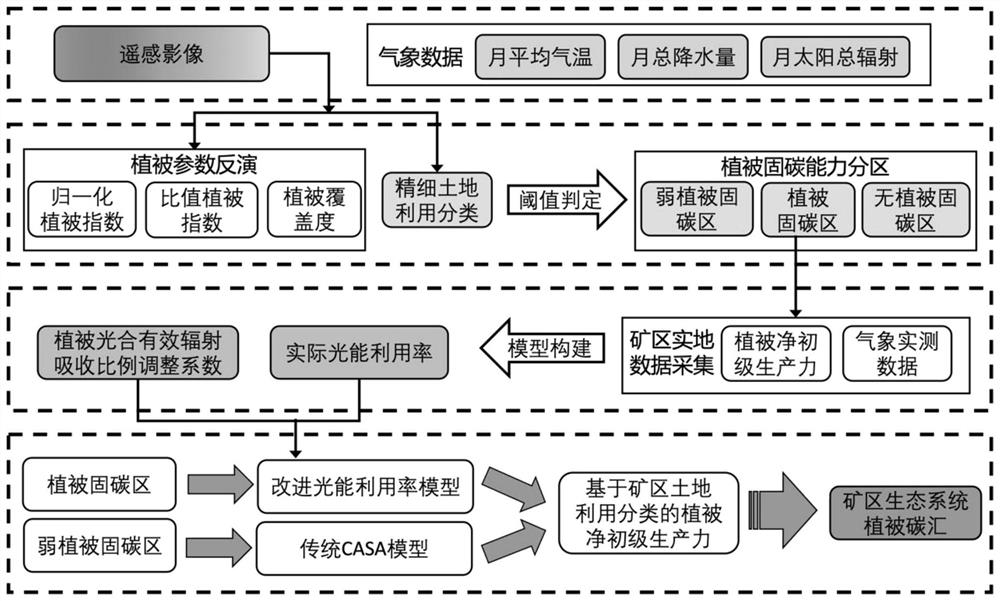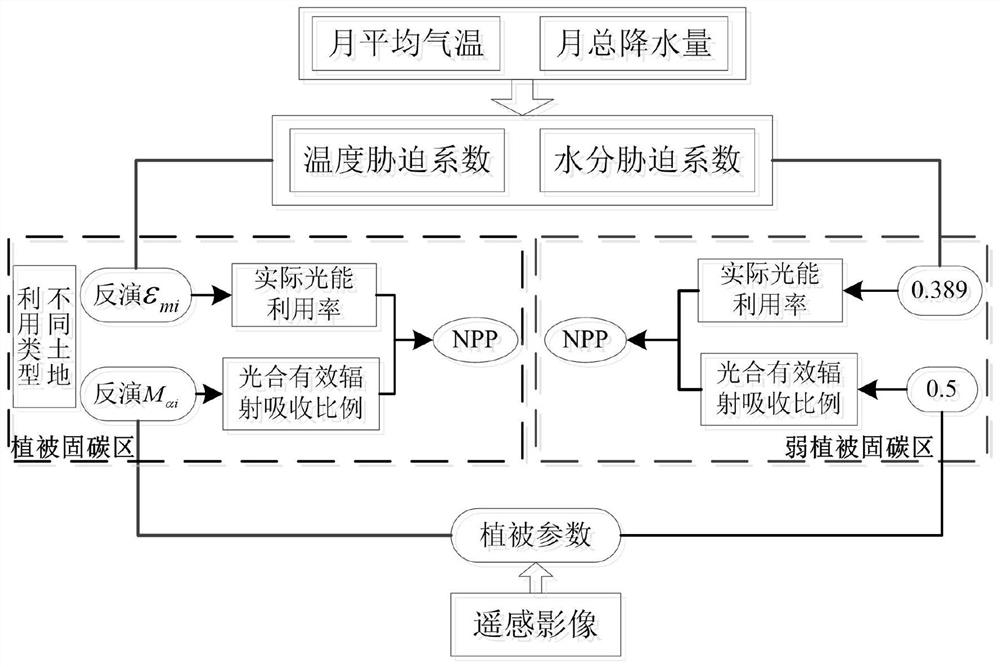Mine area vegetation carbon sink remote sensing inversion method of fine land utilization type
A remote sensing inversion and vegetation technology, which is applied in the fields of mining, ecology, remote sensing and geographic information, can solve the lack of remote sensing vegetation carbon sink inversion models in mining areas, cannot evaluate the contribution of vegetation carbon sinks in different regions, and does not take into account the remote sensing vegetation. To improve the accuracy of carbon sink calculation model parameters, such as spatial differences
- Summary
- Abstract
- Description
- Claims
- Application Information
AI Technical Summary
Problems solved by technology
Method used
Image
Examples
Embodiment
[0083] Such as Figure 1 to Figure 10 As shown, a fine land use type mining vegetation carbon sink remote sensing inversion method, the method is as follows:
[0084] A. Obtain high-resolution image data. High-resolution image data can come from Landsat series satellite remote sensing images or high-resolution satellite remote sensing images or UAV high-resolution remote sensing images or other images (either from a single image or from It is multi-source image data. In order to improve the accuracy, it is preferred to use multi-source observation data, such as Landsat series land resources satellite remote sensing images, domestic high-resolution satellite remote sensing images and other high-resolution image data; If the images in some areas are missing, it is necessary to combine the high spatial resolution sensor of the UAV to confirm and reanalyze the areas that cannot be accurately interpreted by the satellite images), and the high-resolution image data is cut according ...
PUM
 Login to View More
Login to View More Abstract
Description
Claims
Application Information
 Login to View More
Login to View More - R&D
- Intellectual Property
- Life Sciences
- Materials
- Tech Scout
- Unparalleled Data Quality
- Higher Quality Content
- 60% Fewer Hallucinations
Browse by: Latest US Patents, China's latest patents, Technical Efficacy Thesaurus, Application Domain, Technology Topic, Popular Technical Reports.
© 2025 PatSnap. All rights reserved.Legal|Privacy policy|Modern Slavery Act Transparency Statement|Sitemap|About US| Contact US: help@patsnap.com



